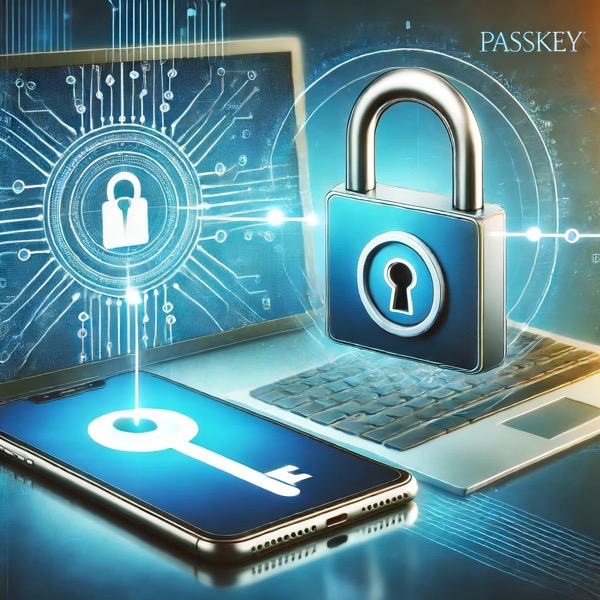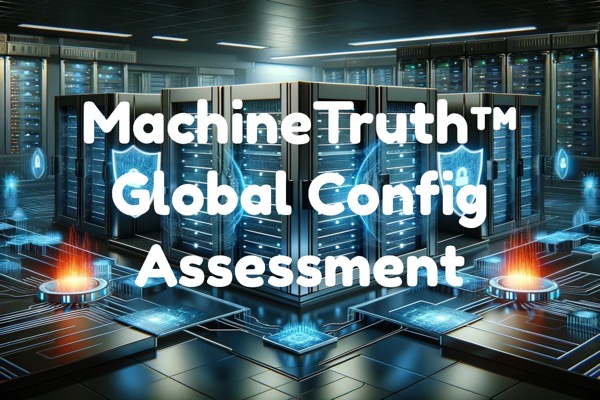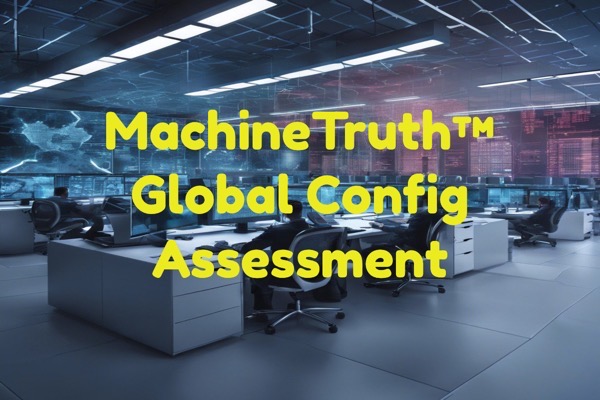In an age where cyber threats morph daily, the corporate world scrambles for more secure authentication methods. Enter passkeys—a term heralding a revolution in digital security. What are these digital keys that promise to fortify the gates of corporate information fortresses?
 Understanding how passkeys function illuminates their potential to become the linchpin of corporate security. With benefits ranging from reducing phishing to simplifying the login process, passkeys present an enticing alternative to traditional passwords. This article offers an insight into the realm of passkeys, their synergy with multi-factor authentication, and the intriguing possibility of facial recognition as a passkey.
Understanding how passkeys function illuminates their potential to become the linchpin of corporate security. With benefits ranging from reducing phishing to simplifying the login process, passkeys present an enticing alternative to traditional passwords. This article offers an insight into the realm of passkeys, their synergy with multi-factor authentication, and the intriguing possibility of facial recognition as a passkey.
From access management to enterprise security, the article navigates through the complexities of implementing passkeys in a corporate environment. It delves into the technical intricacies of key pairs and security keys, while also presenting real-world case studies. Prepare to explore a new frontier in cybersecurity—a journey through the adoption and integration of passkeys in the corporate arena.
Overview of Passkeys
Passkeys represent a paradigm shift in online security, reimagining user authentication to be both more secure and user-friendly. A digital successor to the traditional password, passkeys offer companies a way to prevent phishing attacks, since credentials cannot be reused across services. They are pivotal in simplifying the login process while fortifying security.
What are passkeys?
Passkeys are a type of multi-factor authentication that leverage a cryptographic key pair—a public key that is stored on the server and a private key kept securely on the user’s device—to authenticate access. This method is deemed more secure and convenient compared to passwords, as it reduces vulnerabilities like credential stuffing and phishing. Passkeys remain device-bound, which means the private key never leaves the user’s device, thwarting interception attempts and ensuring that even if the public key is compromised, accounts remain protected.
How do passkeys work?
The operation of passkeys hinges on public key cryptography. When a user attempts to access a service, the server dispatches a challenge to their device. The device responds by using its stored private key to sign the challenge. This signed response is then relayed back to the server, which verifies the signature using the public key. If the signature is correct, access is granted. Throughout this process, passwords are never required, thereby diminishing the chances of user credentials being intercepted or stolen. Biometric features, such as facial recognition or fingerprint scanning, are frequently integrated to confirm the user’s identity before the device signs off.
Benefits of using passkeys in corporate environments
The integration of passkeys into corporate environments poses a myriad of benefits:
- Enhanced Productivity: Passkeys eradicate the inconvenience of remembering passwords, which allows employees to focus on core business tasks without interruption for password recovery.
- Lower IT Costs: With device syncing and cloud storage, employees can resolve access issues independently, diminishing the number of helpdesk tickets related to password resets.
- Augmented Security: Passkeys stored in the cloud offer additional layers of security when compared to local storage, thus shoring up corporate defenses against unauthorized access and data breaches.
- User Experience and Accountability: With passkeys, employees enjoy a seamless login experience across various devices and platforms, which also enables precise tracking of actions on individual user accounts.
- Resilience to Phishing: The structure of passkeys inherently resists phishing schemes, which substantially reduces the looming threat of such attacks in corporate settings.
In summary, the rollout of passkeys in the corporate sphere is poised to strengthen security protocols while promoting a more efficient and user-friendly authentication landscape. As technology giants like Apple, Google, and Microsoft endorse this innovative method, the adoption of passkeys is slated to become a gold standard for enterprises aiming to fortify their cybersecurity architecture and enhance operational efficiency.
Understanding Multi-Factor Authentication
In today’s increasingly digital corporate landscape, ensuring the security of sensitive information is paramount. One of the pivotal strategies for bolstering identity security in enterprise environments is Multi-Factor Authentication (MFA). MFA isn’t just about adding layers of security; it’s about smartly leveraging various credentials to create a more robust defense against unauthorized access.
What is multi-factor authentication (MFA)?
Multi-factor authentication (MFA) is a security mechanism that requires users to verify their identity by presenting multiple credentials before gaining access to a system. Instead of solely relying on passwords, MFA combines at least two of the following authentication factors: something the user knows (like a passcode), something the user has (such as a security key or smartphone), and something the user is (biometric verification, like a fingerprint or facial recognition). By integrating MFA, organizations can dramatically reduce the odds of a security breach, as gaining access requires circumventing several security layers rather than just one.
How can passkeys be used as part of MFA?
Passkeys are a relatively new but powerful player in the MFA arena. Functioning as cryptographic key pairs, they securely encrypt data and guarantee that the user is who they claim to be without the pitfalls of traditional password-based systems. In the context of MFA, passkeys are the possession factor – something the user has. Because the private key is stored on the user’s device and never shared, passkeys significantly mitigate the risk of credential attacks. When used together with a biometric factor or PIN (something the user is or knows), passkeys embody the principles of MFA while offering a consistent and user-friendly authentication experience.
Advantages of using passkeys for MFA in corporate environments
The adoption of passkeys within corporate MFA systems presents a range of advantages that extend beyond traditional security benefits:
- Enhanced Security: Passkeys are secure by design, featuring lengthy, unique, and randomly generated strings that are incredibly challenging for bad actors to compromise.
- Reduced Risk of Phishing: Due to their cryptographic nature, passkeys are resilient to credential stuffing and phishing attacks, as they cannot be reused or easily intercepted.
- Ease of Implementation: The integration of passkeys into MFA systems is supported by major technology providers, simplifying deployment in corporate settings.
- Non-repudiation: Passkeys offer an audit trail, linking actions directly to individual users, which helps with compliance and incident analysis.
- Streamlined User Experience: Passkeys eliminate the frustration associated with forgotten passwords, thus improving productivity and user satisfaction.
In essence, passkeys as part of MFA in enterprise settings not only amplify security but also promote a more intuitive and frictionless user experience, which is instrumental in nurturing a security-conscious culture without sacrificing efficiency.
Exploring Facial Recognition as a Passkey Option
In corporate settings, the quest for robust security measures that also elevate convenience is relentless. Facial recognition emerges as a shimmering beacon in this realm, offering a way to both solidify security protocols and streamline access processes. By incorporating facial recognition technology, passkeys not only transcend the traditional password paradigm but also reimagine user authentication through a seamless, passwordless experience.
Introduction to facial recognition technology
Facial recognition technology rests on the cutting edge of biometric verification, providing a sophisticated yet user-friendly method for identity confirmation. When paired with passkey technology, it bolsters the security framework, enabling users to gain access to systems, websites, and apps with just a glance. Notably, Microsoft’s Windows Hello presents a shining example of this technology in action, advocating for a phishing-resistant login that employs facial recognition, eliminating the dependency on recollectable passwords. The harmonious marriage between passkeys and facial recognition sets the stage for a future where traditional authentication methods gracefully bow out, making room for a more secure and convenient approach—echoing the industry’s pursuit of advancing user-centric security measures.
Using facial meeting as a passkey in corporate environments
The implementation of facial recognition as a passkey within the corporate landscape brings forth a plethora of benefits. This merger of technology offers a reciprocal reinforcement where the reliability of cryptographic key pairs complements the uniqueness of biometric data, yielding a fortified bulwark against unauthorized entry. Such synergy not only deters phishing attempts and mitigates password breach incidents but also refines the user experience to an impeccable standard. Employees are alleviated from the burdensome task of password memorization and management, thus enabling a swift and uninterrupted transition between tasks. Moreover, by streamlining the authentication process without compromising security, facial recognition passkeys promise a reduction in IT-related expenditures, tipping the scales toward operational efficiency and cost-effectiveness.
Security considerations and challenges with facial recognition as a passkey
While the fusion of passkeys and facial recognition represents a monumental leap in access management, it is imperative to scrutinize any potential security implications and challenges. Passkeys, erected upon the foundation of public and private cryptographic keys, must be vigilantly protected, with the sanctity of the private key being paramount. The utilization of FIDO standards, embedded in strong cryptographic principles, endorses the integrity of passkey systems that integrate facial recognition. However, the accuracy and reliability of such biometric systems, as well as concerns around potential privacy invasions and spoofing, must be cautiously considered and mitigated through ongoing improvement and rigorous standards compliance. Despite these hurdles, Google’s initiative to eschew passwords in favor of biometric authentication heralds a transformative shift, promising a harmonious balance of enhanced security and user-centric convenience, tailor-made for the digital age.
Implementing Access Management with Passkeys
Access management serves as the gatekeeper in corporate settings, dictating the realms of digital resources that employees can traverse. It determines the level at which individuals have the privilege to engage with data across an array of devices, such as any device, strictly managed ones, or ones under heightened supervision. Managing the distribution and syncing of critical components like passkeys is instrumental in safeguarding corporate data. This function is flexible, allowing for configurations that suit the security topology of a company, whether passkeys are accessible on any device, are restricted to managed devices, or are limited to supervised appliances only. The architecture of device management servers is fundamental, as they must endorse the intricacy of access management to ensure that work-related passkeys are synchronized exclusively with company-managed hardware.
Role of Passkeys in Access Management
In the labyrinth of corporate cybersecurity, passkeys signify a transition from broad to surgical access controls. Administrators now have the dexterity to assign specific keys to users or groups, thereby defining access limits to company resources with precision. This is not just a step forward in security—it’s a leap, setting up a fortress resistant to phishing and insensitive to unauthorized data excursions. Passkeys empower workforces by sanctioning synced device usage, boosting productivity, and trimming support costs that typically accompany the drama of password resets. When it comes to safeguarding company secrets, passkeys are akin to personal bodyguards, ensuring that only vetted personnel gain passage. Their authentication process, firmly rooted in biometric or PIN verification that doesn’t leave the secure confines of the user’s device, raises the parapet against attackers hunting for shareable secrets.
Best Practices for Implementing Passkeys in Access Management in Corporate Environments
To tether passkeys to productivity is to embrace a form of digital liberation. By allowing employees access from a spectrum of devices, they become unbound from the chains of singular workstations, surfing the waves of flexibility while buoyed by cloud-stored security. The transformation of authentication within the corporate sphere is evident as passkeys promise stronger protection and traceable user activity, critical in swiftly navigating through the aftermath of security events or policy infractions. Moreover, remote work dynamics, which have become part of the modern corporate narrative, are buoyed by passkeys guarding the entrance to corporate networks like sentinels, preventing the seepage of sensitive information.
The adoption of passkeys mandates a calculated strategy, considering the mosaic of organizational controls. Embrace the vetting of third-party security, dive deep into the security and auditability of cloud offerings, and address possible weaknesses head-on to bolster phishing defenses. Here is a checklist for organizations ready to embark on the passkeys quest:
- Assess and accept third-party security controls.
- Evaluate the security and accessibility of cloud services involved in storing and managing passkeys.
- Formulate robust organizational policies for authentication management.
- Continuously monitor and mitigate vulnerabilities to enhance phishing resistance.
By adhering to these guidelines, enterprises can navigate the passkey landscape with confidence, journeying toward enhanced security and operational fluidity.
Enhancing Security with Passkeys in Enterprise Environments
In the digital realm of enterprise environments, security is paramount. The advent of passkeys marks a new chapter in the narrative of cybersecurity, providing a strong, user-friendly method of authentication. Backed by FIDO Authentication, passkeys function as advanced digital credentials, enabling employees to gain system access seamlessly, devoid of the need for conventional passwords. The cryptographic signatures inherent to passkeys are unique to each user and tethered to their specific devices, fortifying security measures and streamlining the login process.
Leveraging passkeys elevates enterprise security by thwarting common threats that plague password-reliant systems. These threats manifest in the forms of phishing, credential stuffing, and the ever-present danger of weak and reused passwords. As a vanguard technology, passkeys endeavor to transcend these limitations, providing a fortified barrier that cyber culprits find nearly insurmountable. Furthermore, the shift towards passkeys in corporate landscapes seems inevitable as more enterprises recognize the drawbacks of password-dependent systems and embrace the gold standard of security that passkeys represent.
Unique security challenges in enterprise environments
The pivot to passkeys in corporate settings must confront an array of unique security conundrums. Predominantly, the present lack of support for Strong Customer Authentication (SCA) by passkeys poses compliance challenges within heavily regulated industries. Enterprises must juggle the implementation of passkeys with meeting the stringent stipulations of regulatory frameworks such as the General Data Protection Regulation (GDPR) and the Health Insurance Portability and Accountability Act (HIPAA).
Traditional password-based authentication is a breeding ground for vulnerabilities and unauthorized access, a significant pain point for enterprises. The human contingent often emerges as the weakest security link, with users historically defaulting to easily decipherable passwords that are frequently recycled across platforms. This human tendency increases the susceptibility to cyber-attacks manifold, thereby amplifying the urgency for more robust authentication technologies. Security teams, alongside Chief Information Security Officers (CISOs), are tasked with meticulously vetting authentication methods and ensuring they align neatly with organizational controls.
How passkeys can address these security challenges
Passkeys provide a secure, systematic solution to the intricate challenges of enterprise authentication. Reducing the reliance on passwords eliminates a significant vector for data breaches and unauthorized ventures into corporate data. Passkeys’ resistance to phishing attacks lies in a simple yet profound principle—they do not revolve around shareable secrets. Consequently, the risk of crucial information being intercepted or duped is significantly lowered.
Accountability is heightened in a passkey-centered authentication framework. Each action can be precisely mapped back to its performer, aiding in the rapid unraveling of security incidents or violations of policies. Moreover, the rise of remote and hybrid work models magnifies the value of passkeys. These keys act as gatekeepers, ensuring that remote access to critical networks is an exclusive privilege for authorized personnel. Complementing passkeys with additional security measures like multi-factor authentication (MFA) and single sign-on (SSO) further propels identity security, paving the way for secure and efficient access across an expanse of applications and devices.
Case studies of passkey implementation in enterprise environments
An examination of real-world applications reveals the tangible benefits of integrating passkeys into enterprise settings. Organizations that have woven passkeys into their cybersecurity fabric have observed a marked enhancement in user accountability, with each transaction or action being attributable to a specific user. This attribution is not only beneficial for routine audit trails but also proves invaluable when a swift response is critical—during a data breach, for instance.
Remote work, a fixture of contemporary corporate culture, gains a fortified layer of security through implemented passkeys. The assurance that sensitive systems remain impenetrable to all but explicitly permitted personnel is a testament to the efficacy of passkeys in modern environments. Comprehensive policies and practices encompassing password management, access delineation, MFA, SSO, and adoption of password managers are pillars of effective passkey implementation.
As cybersecurity strategies evolve, the synergy between passkeys and SSO-enabled applications becomes noteworthy. Companies have been adopting passkey-supported password managers to streamline access management, concurrently enhancing identity security and user experience. This alliance illustrates the potential of passkeys to redefine authentication, carving a path toward a user-friendly and secure enterprise landscape that transcends traditional password dependencies.
Key Pair and Security Key: Strengthening Passkey Authentication
Passkeys are revolutionizing enterprise security by leveraging key pairs—a public and a private key, which work in tandem to fortify authentication processes. When a user registers with a service, they generate a key pair and the public key is sent to the service to be stored on its server. The private key, which is never shared or transmitted, is securely stored on the user’s device. This mechanism improves security by replacing vulnerable passwords with cryptographic credentials that are unguessable and unique to every interaction, thereby setting a new precedent in secure access management in the corporate domain.
What are key pairs and security keys?
Key pairs are at the heart of passkey technology. A public key encrypts information, which can only be decrypted by the corresponding private key. This customization of keys means that even if a public key is intercepted, unauthorized entities cannot decrypt the information without the private counterpart. Passkeys elevate security by binding these cryptographic keys to a user’s device—typically a smartphone or hardware token—using protocols underpinned by FIDO Authentication standards. This secure storage ensures that only authorized personnel can gain access to enterprise systems, and the decryption capabilities are safeguarded from potential cyber threats.
How do key pairs and security keys enhance passkey authentication?
Key pairs and security keys heighten passkey authentication by creating a system that is inherently resilient to phishing, pretexting, and other social engineering attacks. Since the private key is device-bound and not stored on any server, hackers are left with no actionable data, even in the unfortunate event of a server breach. Passkeys are service-specific, removing the vulnerability of reused credentials across multiple sites—a common pitfall that often leads to cascading security breaches. By effectively eliminating complex passwords, key pairs streamline the user experience, while simultaneously bolstering security, illustrating a win-win scenario for businesses and users alike.
Examples of key pair and security key implementation in corporate environments
In the corporate sphere, the implementation of passkeys with key pairs results in a multifaceted enhancement of security protocols. Biometric checks such as fingerprints or retina scans serve as a validation method without exposing biometric data—it stays within the user’s device, with only a signal of successful verification reaching the server. With the future direction towards passkey and password manager collaboration, passkeys will likely be stored in secure vaults provided by password management solutions, further solidifying corporate data protection.
Companies can supplement current password policies by implementing passkey-enabled systems that encompass:
- Biometric authentication for swift and secure access
- Robust password manager applications to support the transition and maintain rigorous admin controls
- Continual compliance with evolving industry standards ensuring a resilient defense against unauthorized access
In summary, the synergy between key pairs and security keys within passkey frameworks presents an innovative leap in the realm of cybersecurity. As organizations embrace this advance, they lay the groundwork for a more secure, password-free future that promises not only improved protection but also a more streamlined authentication experience for users.
Summary
In today’s dynamic enterprise environments, passkeys are emerging as a robust solution to traditional authentication challenges. They mark a significant shift from passwords by enabling passwordless sign-ins, making use of convenient and secure methods such as Touch ID or Face ID. Passkeys are unique for each app or website, greatly enhancing security and offering a consistent user experience. With the capability to be stored on smartphones, users benefit from the flexibility of either having their passkeys synchronized across platforms via the cloud or tied to individual devices.
These cryptographic keys are designed to be phishing-resistant, mitigating common security issues like credential stuffing. They can be stored either on a user’s mobile device or a dedicated physical security key, providing a seamless authentication process. By leveraging cryptographic key pairs compatible with FIDO devices, passkeys not only bolster security but also streamline the user interface.
The adaptation of passkeys in corporate environments promises to reduce the frequency of password resets, thwart unauthorized access, and counteract credential attacks more effectively than traditional two-factor or multi-factor authentication methods. Passkeys are primed to become the industry standard, delivering additional security without compromising on user experience.
* AI tools were used as a research assistant for this content.



 Understanding how passkeys function illuminates their potential to become the linchpin of corporate security. With benefits ranging from reducing phishing to simplifying the login process, passkeys present an enticing alternative to traditional passwords. This article offers an insight into the realm of passkeys, their synergy with multi-factor authentication, and the intriguing possibility of facial recognition as a passkey.
Understanding how passkeys function illuminates their potential to become the linchpin of corporate security. With benefits ranging from reducing phishing to simplifying the login process, passkeys present an enticing alternative to traditional passwords. This article offers an insight into the realm of passkeys, their synergy with multi-factor authentication, and the intriguing possibility of facial recognition as a passkey.
